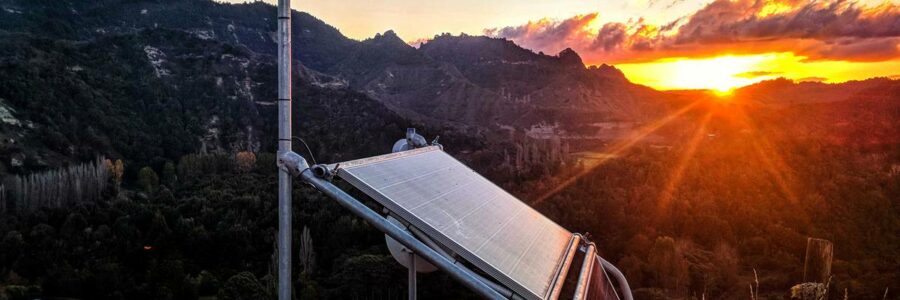
Juha Saarinen: Elon Musk’s Starlink a new challenge for rural broadband providers
OPINION:
Orders have opened in New Zealand for the Starlink satellite broadband service, as provided by Elon Musk’s SpaceX company, and pricing is the same as anywhere else in the world.
For Kiwis it translates into a monthly charge of $159 along with $799 for Dishy, as the satellite transceiver is called, and $114 handling and shipping, direct to the customer.
You install Dishy yourself, which seems fairly easy using a smartphone app, as long as there’s a clear view of the sky. The main issue is probably supplying the 100 watts of power over a 30 metre data cable to wherever Dishy will live.
Deliveries are expected to start in the second half of this year, so should rural providers feel nervous about Starlink?
Maybe: for starters, Starlink service specifications are something that current remote broadband users can only dream of. The low-orbit satellites provide city-like broadband with up to 150 megabit per second downloads and 30-50 Mbps uploads, with 20-40 milliseconds packet delay. That’s many times better than most rural broadband options.
Although it could change, there are currently no data caps on Starlink.
“Starlink offers some impressive specs over some of the current offerings and it will certainly have an impact; in harder-to-service areas it’s bound to garner a following,” said Mike Smith, chairman of the Wireless Internet Service Providers Association (WISPA) of New Zealand.
Smith said there is apprehension among WISPA members who have more than 75,000 rural homes and businesses as customers, but also a recognition that Starlink will be part of New Zealand’s broadband fabric from now on.
Vodafone and Spark have fingers in the rural broadband pie and are keeping a close watch on Starlink. With their large and diverse businesses, which include largely unregulated mobile 4G and 5G networks that can also provide fixed wireless broadband, Starlink is unlikely to have an impact on the big telcos.
Is it all that bad though? Liam Farr, chief technology officer of wholesale telecommunications company ISPCO, says Starlink could in fact be good for some rural and remote providers.
For heavy internet users, switching to Starlink will be a no-brainer. Starlink’s $159 a month compares to Farmside’s top-end 4G Rural Broadband Initiative (RBI) at $155.99 a month with a 200 gigabyte data cap and 24-month contract.
Very heavy users are not profitable to WISPs as they consume more resources than low to moderate broadband subscribers, Farr explained.
“Off-loading heavy users to Starlink could be better for WISPs and improve things for moderate users,” he said.
For price-sensitive rural users with low to moderate broadband use, Starlink’s higher monthly cost and relatively expensive Dishy equipment, and potential additional costs in getting it installed, are barriers to switching, Farr said.
Which is not to say rural and remote internet providers can ignore Starlink.
First, it’s unlikely that an unregulated Starlink will offer a wholesale option, Farr said.
Second, providers shouldn’t rely on Starlink’s pricing staying high.
“If Starlink drops the costs, it will hit existing providers hard,” Farr believes.
Starlink could slow down growth for providers who need all the customers they can get – and it can be as few as five in some cases – when they build into a remote area. If one or two of those customers pick Starlink, which is available immediately with no wait, it could make the entire build unviable, Farr notes.
There’s also a questionmark over how Starlink will affect government-subsidised RBI rollouts, where providers have to commit to operating for five years, and often need to put up personal guarantees to receive funding.
The Government probably needs to urgently think about what it can do to help, Farr suggests.
Faced with competition from Starlink, providers need to be innovative and keep costs down while rebuilding existing networks to increase service density, Farr said.
That’s a euphemism for “build it cheaply”, he agrees, but rural providers who know the areas they operate in and collaborate with customers who have a real incentive to get broadband are at an advantage here.
Value engineering could be building low-cost wireless transmission sites using scaffolding and non-traditional materials, working with customers who will connect to them.
It could mean looking hard at getting fibre backhaul as close to a wireless site as possible, using inexpensive options like Chorus’ NGA Business which is similar to UFB but with equal speeds down and upstream, and better service level agreements.
Meeting the Starlink challenge will require resourcefulness, creativity and community engagement. It won’t be easy, but it’s hard to imagine anyone better placed to do that than New Zealand’s rural and remote internet providers.
Source: Read Full Article
/cloudfront-ap-southeast-2.images.arcpublishing.com/nzme/TP7TXWHVXXZ6GIRCQ4IPJRYHQ4.jpg)